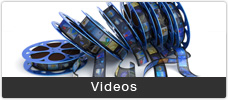Case Studies
Jakob Kupfer | EIZO
Jakob Kupfer is a ‘light painter’ in the best, most traditional sense. His work takes light as its subject and medium, and explores how light presents itself and can come into being in an artistic form. At the center of Kupfer’s work are light’s two most characteristic traits – its lack of any concreteness and its state of being forever in flux. The FADES series is one of the artist’s most essential works, consisting of digital images that are permanently but almost imperceptibly in motion.
Until now, these works have been exhibited in digital photo frames that are fitted with a passe-partout and frame. However, this format also has its limits. “We began to look for a way of making Kupfer’s images bigger, which would also allow viewers to experience the images with the highest quality,” says Andreas Herrmann who represents the artist and runs the mianki.Gallery in Berlin.
It was crucial for the images to maintain the impression of being conventional images in the obligatory square format to make this possible. “We finally came across the EIZO FlexScan EV2730Q, which is the only large, high-resolution monitor that is currently available with an aspect ratio of 1:1,” Hermann says. The square 27-inch monitor features a thin bezel and has a diagonal length of 67 cm, making it the ideal basis for the project.

The next step was to find a mini computer that would allow the artist to feed the image data to the monitor. “After a bit of trial and error, we found a solution that would allow us to fit the entire technology into a specially prepared picture frame,” says Hermann, whose gallery exhibited the FADES series for the first time.

Only the power cable gives away the fact that the image is not a conventional one, but rather a digital art work that is constantly in flux.
However, it wasn’t just the unconventional format that made the EIZO FlexScan EV2730Q the ideal frame for Kupfer’s medium-sized FADES series. The monitor also provides high resolution and excellent image quality, which are decisive factors that make it possible for the light painter’s images to come across realistically as conventional paintings.
Jakob Kupfer sees the FADES collection as a series of individual paintings – as digital ‘originals’ – even though they take a digital form. Every FADE is born as a digital file that travels through the computer, monitor, and frame to become an entity that only appears once. This internal logic of the FADES series means the EIZO monitor itself becomes an integral part of the digital work of art.

Artist’s website:
www.jakobkupfer.com
Contact details:
mianki.Gallery
Andreas Herrmann
(+49-30) 3643-2708
www.mianki.com









